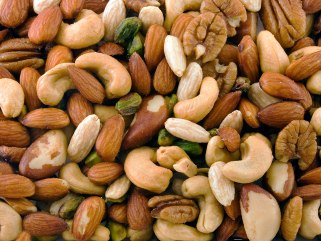
People who walk enough to meet or exceed physical activity recommendations may be less likely to die early than those who only walk a little, new research shows.
The American Heart Association (AHA) recommends adults be physically active for at least two and a half hours per week. Previous research has shown exercising more than that may bring extra benefits.
“An important question left to be answered is how much walking is beneficial,” study author Paul Williams, from the Lawrence Berkeley National Laboratory in Berkeley, California, said.
He analyzed data from 42,000 mostly middle-aged people who enrolled in the National Walkers’ Health Study between 1998 and 2001. They had all subscribed to a walking magazine or attended walking events before the study.
Walkers filled out questionnaires about their health and lifestyle, including exercise and eating habits. Williams then used death records to track who in the study was still alive at the end of 2008.
Based on their questionnaire responses, 23 percent of participants didn’t walk enough to meet physical activity guidelines. Another 16 percent met the guidelines, and the rest exceeded them.
Over an average of nine and a half years, 2,448 people died – almost 6 percent.
Compared to people who didn’t meet the guidelines, those who walked more than the basic recommendation had a one-third lower chance of dying during the study period. Those who met but didn’t exceed the recommendation had an 11 percent lower chance.
That was after taking into account other differences between people who walked various amounts, like diet and education levels.
Participants who walked more had a reduced risk of dying from a stroke, diabetes and heart disease, in particular.
Walking provides plenty of health benefits. But it’s important to note that people who walk more may do so because they are healthier and therefore more able to be active, Williams said. So the new study doesn’t prove walking will extend a person’s life.
“There is always the question of the chicken and the egg – whether people who are healthier are able to walk farther or, conversely, whether the longer distance they walk may translate into better health benefits,” Williams told Reuters Health.
Based on the results, he suggested changing current guidelines by bumping up the minimum amount of physical activity to five hours per week and developing a two-tiered recommendation system that encourages people to exercise more than they do currently.
One tier would aim to get people active, and the other to add to the activity people are already doing, Williams said. That would underscore the point that for couch potatoes, starting to exercise is a healthy move – but the benefits don’t stop there.
“Achieving the weekly exercise guidelines is good,” Williams said, “but exceeding them is even better.”
“When it comes to walking, more is obviously better,” María Simón agreed. She is a fitness trainer and national spokesperson for the AHA and was not involved in the new research.
But, Simón said, the current physical activity guidelines are appropriate.
“The AHA has been very clear in specifying that the recommended guidelines are ‘minimum’ requirements to reduce the risk of heart-related diseases and death and has even provided guidelines for increased activity,” she wrote in an emailed comment.
“Nevertheless, I believe the take-home of this and similar studies is a positive one: ‘Move . . . Just get up and move,'” Simón said.
Source: Zee news



